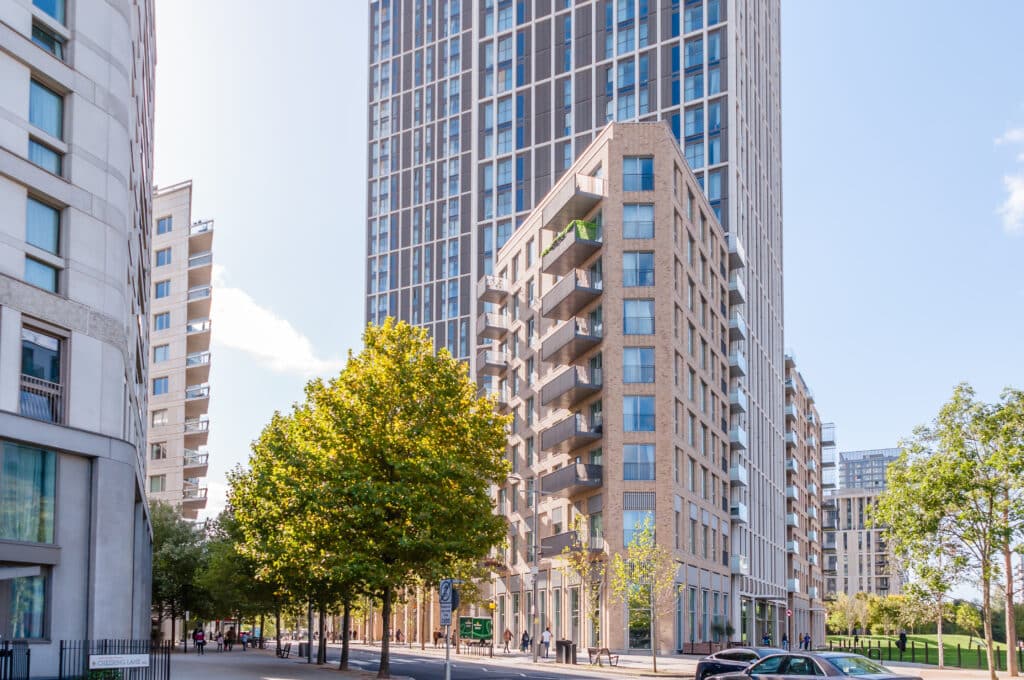Leaseholders in blocks of flats can find themselves navigating a legal maze when it comes to making structural changes. This includes works such as adding balconies or communal amenities or obtaining retrospective consent for unapproved works.
Over recent years, planning and leasehold law in England and Wales has shifted and staying on the right side of those changes is vital. This guide explains the legal framework, recent reforms, practical challenges and provides examples of successful applications to help leaseholders understand their rights and responsibilities.
Legal Rights: Lease, Covenant and Planning
Your lease is the foundational document. Within it, there will typically be an “alterations covenant” which governs what you can or cannot do within your flat. These fall broadly into two categories:
- Absolute covenant: no structural or external alterations at all. If your lease contains such a clause, you may be completely prohibited from making certain changes without renegotiating the lease (e.g. via a deed of variation).
- Qualified covenant: you may make certain alterations if you obtain the freeholder’s (or landlord’s) written consent before beginning any works.
By law, most “improvements” or modifications, must be consented to. According to the Leasehold Advisory Service, the Landlord & Tenant Act 1927 (section 19(2)) implies that even where the lease is silent, a freeholder must not unreasonably refuse licence/consent for alterations.
It is worth noting, however, that the leaseholder must cover any “reasonable costs” incurred by the freeholder in considering your request (for example, legal, surveyor or administrative fees).
Planning Permission & Building Regulations
Granting consent under your lease is only part of the story. Many structural or external changes (balconies, extensions, converting space or altering external façade) will also require planning permission and be subject to Building Regulations.
Your local authority will evaluate whether the proposal fits local planning policies and whether structural safety, fire safety and accessibility standards are met.
Recent Changes & Reform Developments
- 10-Year Rule Replacing the 4-Year Rule
Up until April 2024, if works had been carried out without planning permission and 4 years had passed, some changes could be accepted as immune from enforcement under a “Certificate of Lawfulness (of existing use or development).” But, on 25 April 2024, the law switched from a 4-year rule to a 10-year rule, meaning unauthorised works must now show 10 years of continuous use or development to receive immunity.
- Leasehold & Freehold Reform Act 2024
The Leasehold and Freehold Reform Act 2024 received Royal Assent on 24 May 2024. Its aim is broad: reforming leasehold rights, enfranchisement and management of blocks. But its impact on planning and consent is more indirect:
- The Act abolished marriage value in lease extensions (for leases under 80 years), which may free up capital for leaseholders to invest in improvements.
- It removes the previous “2-year ownership requirement” before you can seek a statutory lease extension, which may help leaseholders free up resources for alterations too.
- The Act also includes a stronger framework for transparent estate management and regulation of leaseholder rights, which influences how consent disputes are resolved or challenged.
Many provisions of the 2024 Act are still not yet in force. Leaseholders should monitor when key parts become active as secondary legislation is released.
- Permitted Development & Office-to-Residential Conversion
Separately, under the Town & Country (General Permitted Development) Order (GPDO), some changes are now allowed without full planning permission, but this does not typically apply to flats in communal blocks.
However, recent changes expanding “Class MA permitted development rights” allow more flexibility around converting commercial buildings to residential use without full planning permission. These changes include relaxing vacancy requirements and removing a size limit on eligible buildings.
While this mainly affects conversions rather than internal flat works, it signals a trend toward easing development constraints, something leaseholders may see replicated in future policy for residential blocks.
Challenges in Obtaining Consent
When obtaining consent for your works, you may unfortunately come up against some push-back from your freeholder or managing agent. Some common reasons for delays or refusal include the below.
- Ambiguity & Delay
Freeholders and managing agents may argue that consent should be refused or delayed on grounds of aesthetics, impact to other units or structural risks. A blanket refusal or long delay can, however, be legally challenged. Courts may intervene where they find that consent was withheld without legitimate grounds or that delays were excessive.
- Cost Disputes
Disputes often arise over what constitutes a “reasonable charge” for processing consent. Freeholders may present high surveyor or legal costs; leaseholders should scrutinise those costs and ensure clarity before proceeding.
- Structural or Fire Safety Issues
Any alterations that affect structural or external walls, fire escapes or cladding will be approached with heightened scrutiny. Approvals may be conditional, requiring specific materials, design changes or fire-rated components.
- Retrospective Applications
If you have already carried out a work without permission, applying retrospectively is risky. The new 10-year rule obviously makes this harder, and local authorities may require you to reverse the work if they refuse retrospective permission or certificates.
Freeholders may also deny retrospective licence for alterations and insist the leaseholder revert to original form.
Negotiating With Freeholders and Collective Decisions
If a block is under share of freehold or multiple freeholders, you may need agreement from multiple parties or even a majority vote. Coordinating approvals and lease amendments can slow the process. Some practical steps to take in this instance are below:
- Early consultation: Engage a surveyor, architect or specialist before drafting your plan. Share preliminary sketches with your freeholder or agent to flag objections early.
- Check your lease and constraints: Review the exact wording of your alterations covenant. Also, check if your building is in a conservation area or subject to Article 4 directions.
- Prepare a strong submission: Include structural engineer’s report, fire safety measures, impact assessments, precise drawings and a project schedule.
- Negotiate consent terms: Be open to conditional consent and request a cap on costs.
- Monitor timelines: If the freeholder unduly delays response, send formal notices. You may have legal recourse.
- Plan for resale: Ensure consents and licences are transferrable to future purchasers and keep full documentation.
- Retrospective caution: If unauthorised work exists, obtain advice before applying retrospectively – weigh risk vs cost.
- Engage a specialist solicitor or leasehold adviser if the freeholder refuses consent or if the dispute escalates.
Examples of Successful Consent Requests
A leaseholder proposed a small balcony to a flat overlooking internal courtyard. By preparing a careful design with matching materials, detailed structural analysis and drafting a neighbour consultation, the local authority approved both planning application and freeholder licence.
In one case, a leaseholder removed a partition wall to create an ensuite. Because no external alteration was involved and the wall was not structural, the freeholder consented on condition of reinstating original form at resale.
A leaseholder replaced windows without freeholder consent. They applied retrospectively, demonstrating minimal change to appearance. The freeholder granted consent in return for a modest licence fee and agreeing to reinstate style consistency at point of sale.



